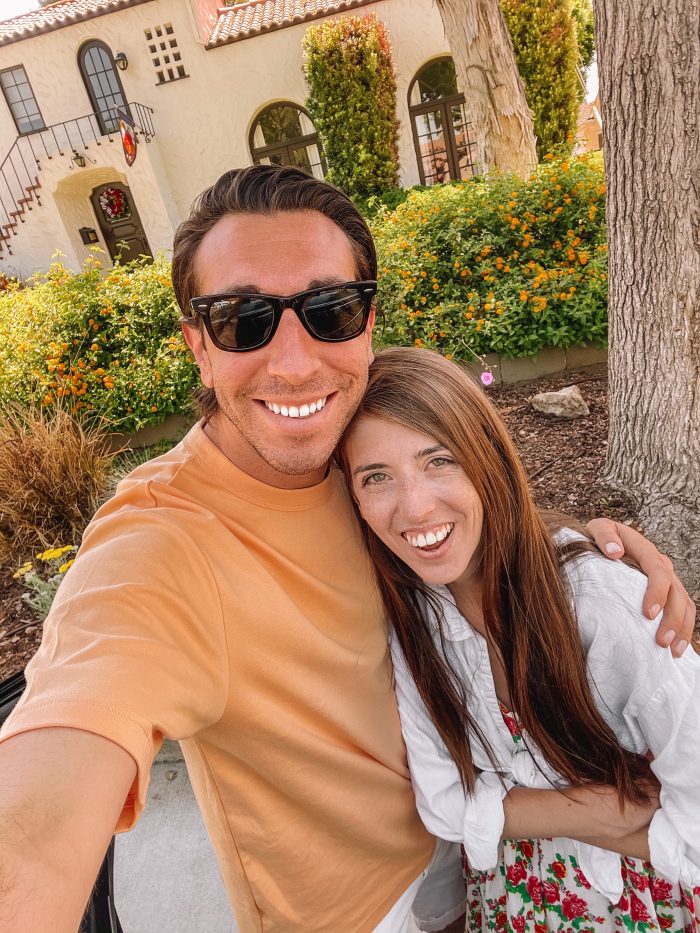
I’m a spender, not a saver. I’m married to a spender, not a saver. We both work self-employed jobs where our income is unstable and we don’t have large companies steadily contributing to our retirement plans or insurance. Neither of us feel that we are “good with money” and know how to make smart money decisions. Stress, fights, panic ensues.
Does this sound or feel familiar to anyone else?
I’ve gone through phases where I go all-in on trying to figure out a strict budget for our family and stick to it, but nothing has worked. The need to plan and predict for the future, and the limitations, has always left me defeated and giving up a few months in.
I actually wrote about this exact topic a few months ago on Instagram when I asked for advice after being fed up with the anxiety it gave me and the arguments it caused in our marriage. I was (am) ready to change my relationship with money once and for all.
Dozens of you ended up recommending the platform You Need A Budget (YNAB) saying they take a different approach to budgeting and when nothing else had worked for you, this did. In fact, so many of you mentioned them in the comments that they took notice and reached out to me to see if they could help.

And that’s where I am now—a newly registered YNAB user (You can get a free 34-day trial, no credit card required, here!) ready to change my relationship with money… I hope?
I’m not going to pretend I’m a money expert all of a sudden (because I’m not), but I am excited to start a year-long journey of trying something new while sharing it here along the way. YNAB has a few rules that I’ll talk about below, but the summary of differences that stood out to me are: they focus on the money you have now and the reality that your budget needs to be flexible.
And I feel like I can confidently say that this is the first time I’ve felt a glimmer of excitement around budgeting. And that’s a HUGE start for me. First, I wanted to share four of my biggest roadblocks, stresses and anxieties surrounding money and my relationship with it.
My Biggest Budgeting Roadblocks
Here we go…
We’re both spenders.
As I mentioned above, Jeff and I are both spenders and not savers. If you’re into enneagram, I’m a 4 which and am very driven by passion. And Jeff is a 7, which means he’s very spontaneous. That combination means we can make rash spending decisions and neither of us feel like we have someone to steadily keep our spending in check.
That fact often leads to financial arguments between the two of us, and a major sense of instability.
We can’t predict the future.
Nobody can, right? I think if 2020 taught us anything, it’s that. But on top of the day-to-day unpredictabilities, we both are self-employed and therefore our income fluctuates dramatically. While we are at a point in our business where we pay ourselves a regular salary to combat this, there are times when we don’t get paid on time and can’t pay out that salary.
This left me feeling deflated anytime I needed to budget. Everything was too rigid for me.
I value things drastically differently.
I am frugal with many purchases but if I happen upon a unique or special item or opportunity, my logic can fly out the window regardless of the price.
Those purchases will often leave me with a complicated feeling of joy of finding something I love and guilt for completely disregarding what it cost.

We have big goals and expenses, without firm dates.
We’re currently looking for a new home and we’re considering our options for growing our family. For us, both of those things involve large sums of money and unreliable timelines. With our next home, we could find it tomorrow or next year. Additionally, I have a lot of medical needs, but never know when those (and the additional costs that come with them) will arise.
How does one save smartly and appropriately for a moving target?
I wanted an easy solution to all my money issues.
This one has been the biggest issue that I’ve had to come to terms with. I’ve hired financial planners and bookkeepers. I’ve put together a budget and never looked at it again—always hoping that would be “the answer” and it just never is.
The truth is, nobody can help manage my day-to-day budget and expenses except for… me. And accepting that there wasn’t going to be one quick fix or miracle button to press has been a journey.
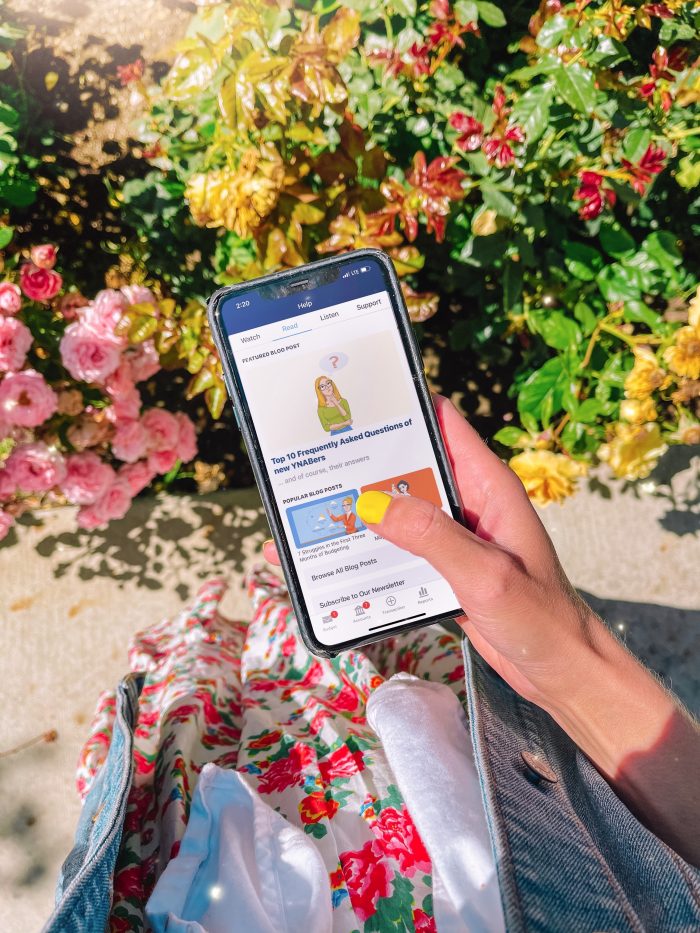
YNAB’s Four Rules (& Why I Like Them)
And that brings me to YNAB. Because yes, YNAB is a budgeting tool but it’s one you have to actively use. It’s not a “press a magic button and never think about it again” kind of situation. But when used as intended, everyone I’ve spoken to has said it has completely changed their lives, marriages and personal relationships with money.
I thought I’d give an overview of the four rules YNAB lives by, and why I like them so far…
Give every dollar a job.
YNAB focuses on the money you have right now, not the money you’re going to have next week or next month. And then it asks you to give every single dollar a job.
Why I like this: By assigning every dollar a “job”, there was no mysterious “leftover money” that could be irrationally spent by one of us without knowing if we could cover the expenses we knew we were going to have. Once you get a month or so in, YNAB will tell you what you budgeted and spent on various items previously so you can start to really track what jobs your dollars have and if you want or need to change them.
Embrace your true expenses.
Look at not only your everyday expenses, but your long-term ones too, like Christmas gifts at the end of the year or your car insurance that’s only due every six months.
Why I like this: After I connected my accounts and credit cards, I was able to look at what we were really spending. Like really, honestly, spending on things. It wasn’t always fun, but it forced me to take a look at what we spent and prioritized throughout the year and take that into account every month so that I didn’t feel guilt or fear when those expenses arose, because I already planned for it.
You have the ability to create as many categories as you want, and to organize them how you want. I found this video super helpful showing the different ways to do so.
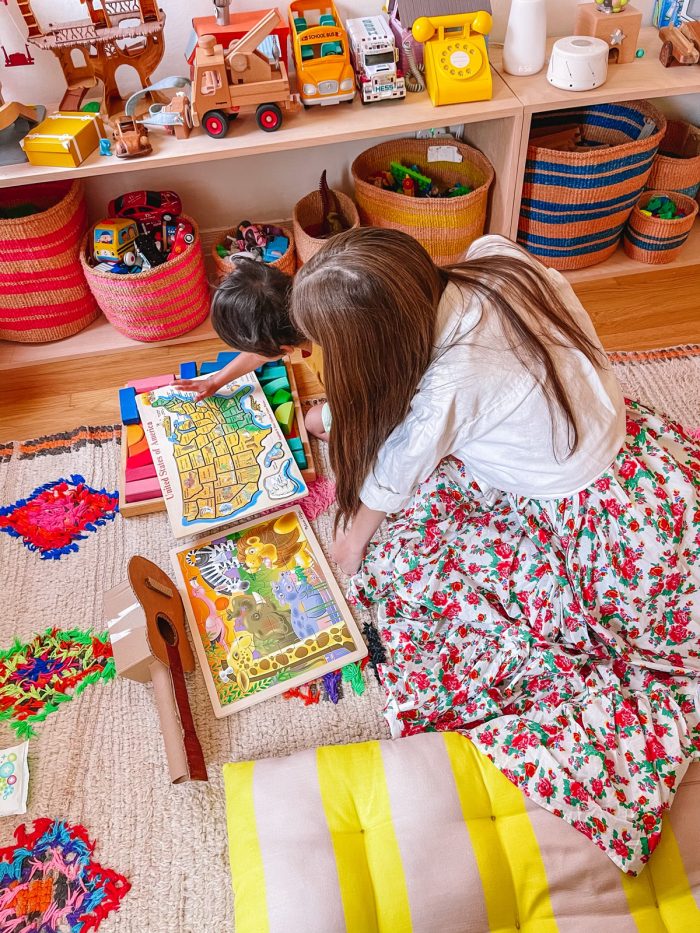
Roll with the punches.
Things happen. You over-budget, you under-budget. You spend more on something one month than you did the last. You have an unexpected expense or you just want to buy something that you didn’t even know you wanted. With every dollar having a job, it forces you to look at exactly what you’re willing to move funds away from in order to cover that expense.
Why I like this: This is my favorite rule because the rigidity of budgeting tools always stressed me OUT! Instead, this allows me to have a real, tangible idea of where my priorities lie. Yes, I can buy that new runner for the hallway, but where I am I willing to pull those funds from? Instead of just buying it and saying “Well, I had the money in my account so it’s FINE!” I can see exactly what reallocating that money is affecting.
They also have goal-setting tools that allow you to save a set amount each month towards a goal, with or without an end date in mind. I love that for those big goals we’re saving for. We can amp up that amount, or pull back and continue to change it based on how life plays out, but still be able to look at that number and see where we’re currently at.
Age your money.
Having to take a real honest look about how every dollar is spent means you’ll be more intentional with how you do so. And that means you may have the opportunity (it may take some time!) to age your money. As in, use last month’s money… for next month’s expenses. Instead of predicting the future, you’re capitalizing on the past! Good job you!!
Why I like this: It feels really positive to me to think that if I have money leftover in a category, I can roll it over to the next month. The idea of eventually getting to the point where we know our expenses are covered by money we already made is REALLY exciting and comforting.

Where We Currently Are In Our Budgeting Journey
I started with a free trial of YNAB about six weeks ago. (You can get a free 34 days trial here.) I also got the chance to speak with one of their experts. If you’re interested, they have regular webinars where you can learn more, and ask questions too!
While Jeff and I discussed the big money goals we needed to save towards and what categories made sense, we decided I’ll be the one managing the budget since I’m the one who is far more anxious about it. For our goals, we put dates for (and YNAB will break down exactly how much you need to save each month to meet it!) and others we just decided on an amount we were comfortable setting aside each month, with no end goal in sight.
I liked that I was able to make realistic categories and budgets and adjust them as needed, and I was able to give myself permission to spend on certain extra things (like fixing up our guest bedroom, and buying the new floral dress you see here!) without feeling guilty because I could see that our true expenses were budgeted for as well with the money we already had. Same goes for Jeff, he knows he can spend what we allotted with out me being all over him about it. (Past me: very guilty of this!!)
Admittedly, YNAB has a bit of a learning curve. They have you think about money differently than you previously have and it takes a bit of adjustment. Luckily, they plan for that and have a live chat option where their experts can talk you through any issues or questions and WOW they’ve solved literally every question I’ve had immediately.
Now, the true test will be that of time. Will I stick to it? How will our spending habits change now that we know exactly where each dollar is going?

I’ll share my next update in the fall, and I’m also planning on doing a Live Q&A with one of YNAB’s experts so they can help answer some of your questions too. Feel free to leave any questions you already have here, about YNAB or budgeting in general and I’ll make note.
And if you’d like to sign up for a free trial of YNAB yourself, you can get a free 34 day trial (no credit card required!) right here.
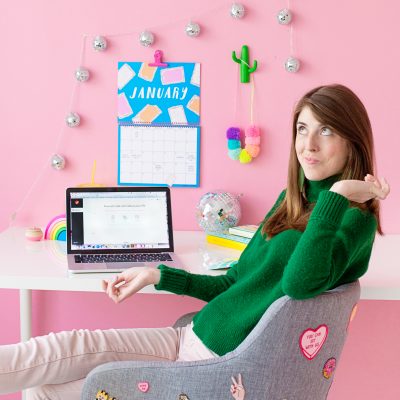





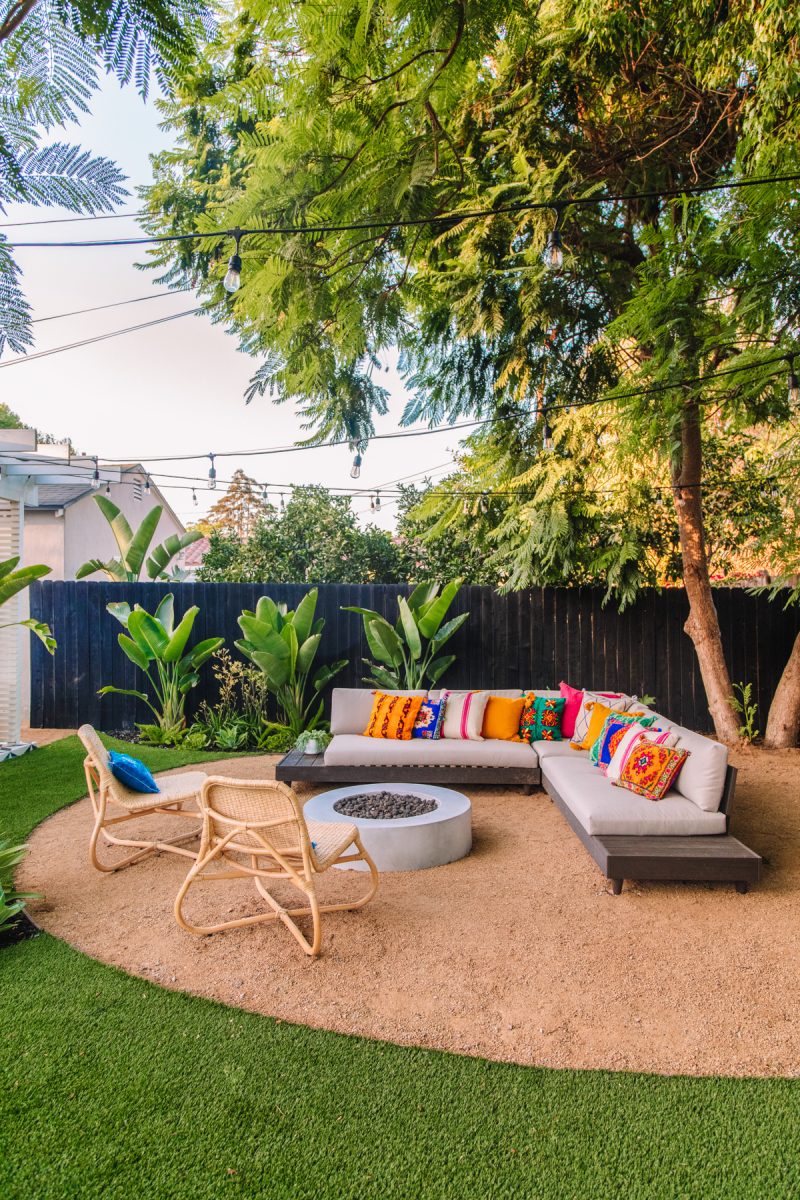

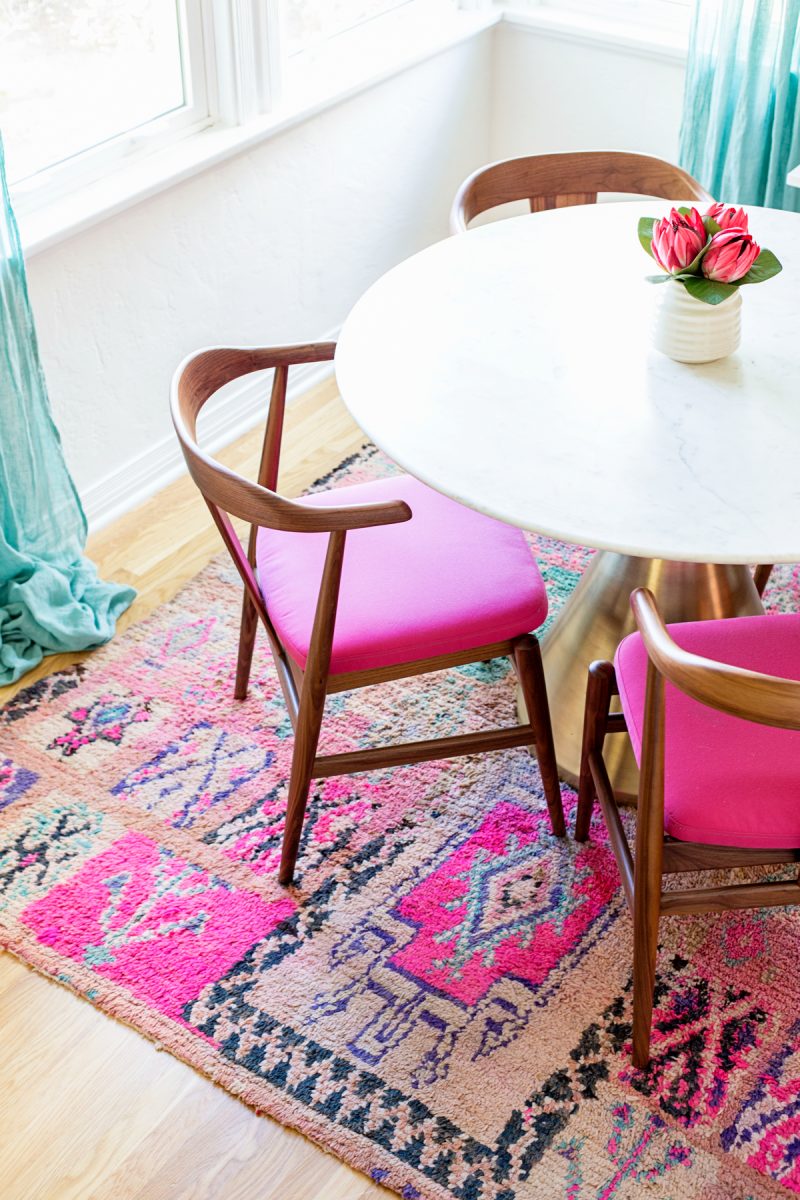


Karen says
My mom taught me to have my own bank account, always pay off my credit card bill (each month), and put money towards a retirement account (each month). These credit card and retirement line items are essentially “bills” to me – they have to happen. Now at age 43, I have no credit card debt (never have), and one of my retirement accounts, which I’ve had since my first job, is very cushy (and has another 15 years ahead of growth).
Kelly says
Wow that’s incredible!! Taking notes for Arlo, haha!!
Morgan says
I adore YNAB! A coworker introduced me to it in my early 20s. As someone who inherited anxiety around money, it was revolutionary. I was a Mint user before YNAB and it’s like night and day—Mint was like a money autopsy (welp it’s gone let’s see what happened to it), while YNAB was like a doctor’s checkup to keep my money healthy. I have since introduced my now husband to it and we take time about once a month to recap and plan for the future. It’s so much fun to do together (planning vacations!! Dinner date funds! How much do we want to spend on a new couch!!!). So glad you found it and I hope it helps you and your husband.
Nancy says
Oh wow! This is what I came to the comments section to ask. I used Mint on and off. I always found it discouraging after awhile. Definitely going to try YNAB now. Thanks Morgan !
Kelly, have you ever tried Mint and had similar experiences?
Kara says
I had the same problem with Mint, It’s really hard to change your spending habits or stick to a firm go al of how much you’re going to spend for a given category with the way mint operates, why knob is like digital envelopes. You can only allocate money that you actually have, and that’s the only amount you get to spend for that category unless you move the money from somewhere else
Kelly says
Digital envelopes is such a great description of it!!
Kelly says
Hi Nancy! I have, I tried Mint several years ago and it didn’t work for me. I felt very similarly to Morgan about it!
Lucy says
I’m also number 4 in enneagram and a cancer, no wonder why I’ve always felt connected to you! <3
Do you know if the app works out of the USA?
Kelly says
It does! But I believe you can only auto-important your accounts if the financial institution is in the US/Canada so you would have to manually import your transactions!